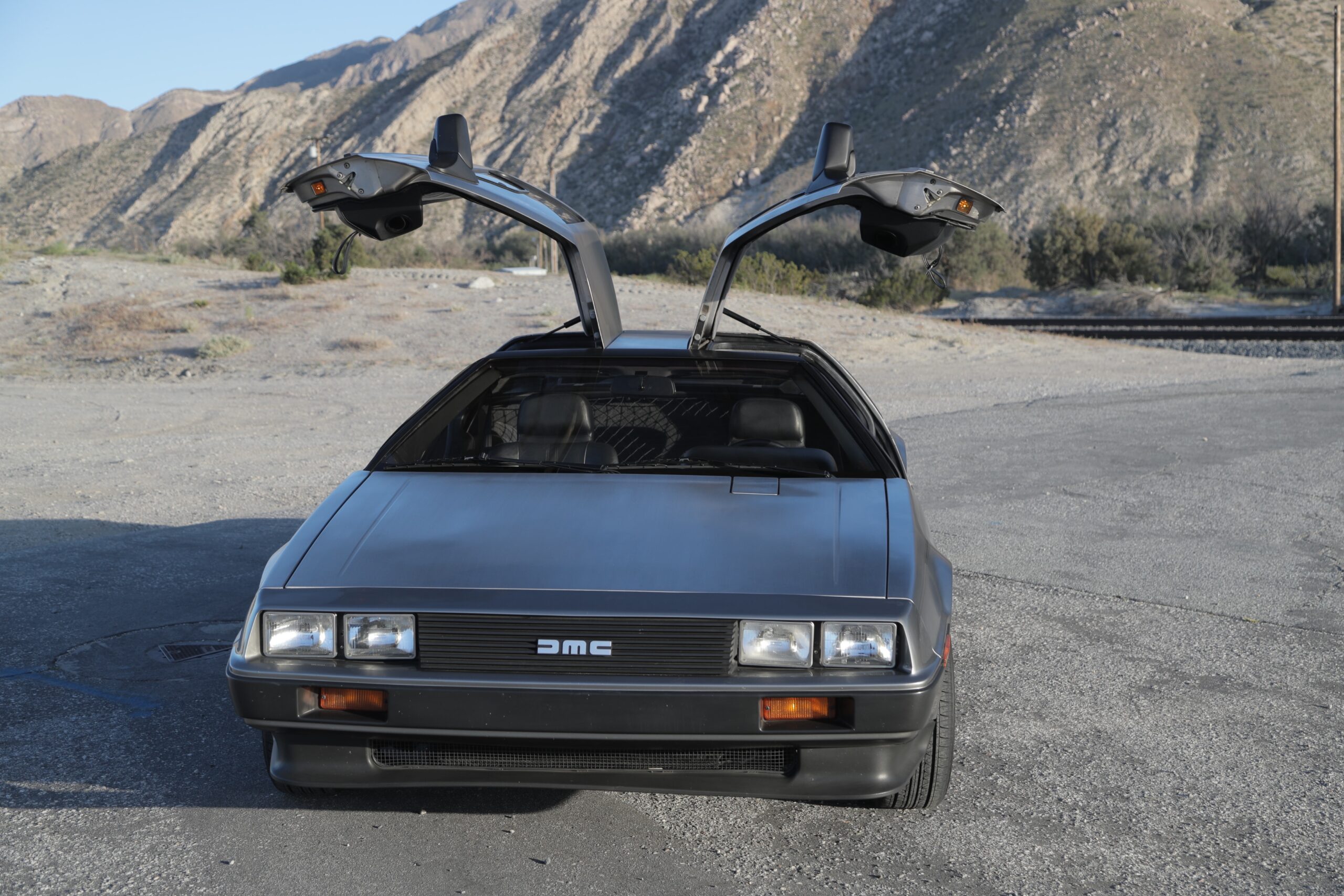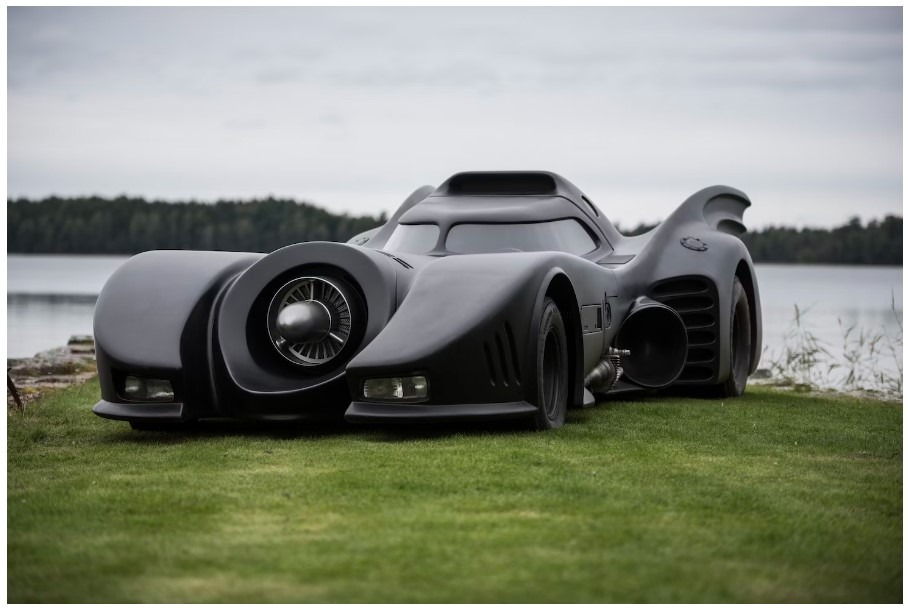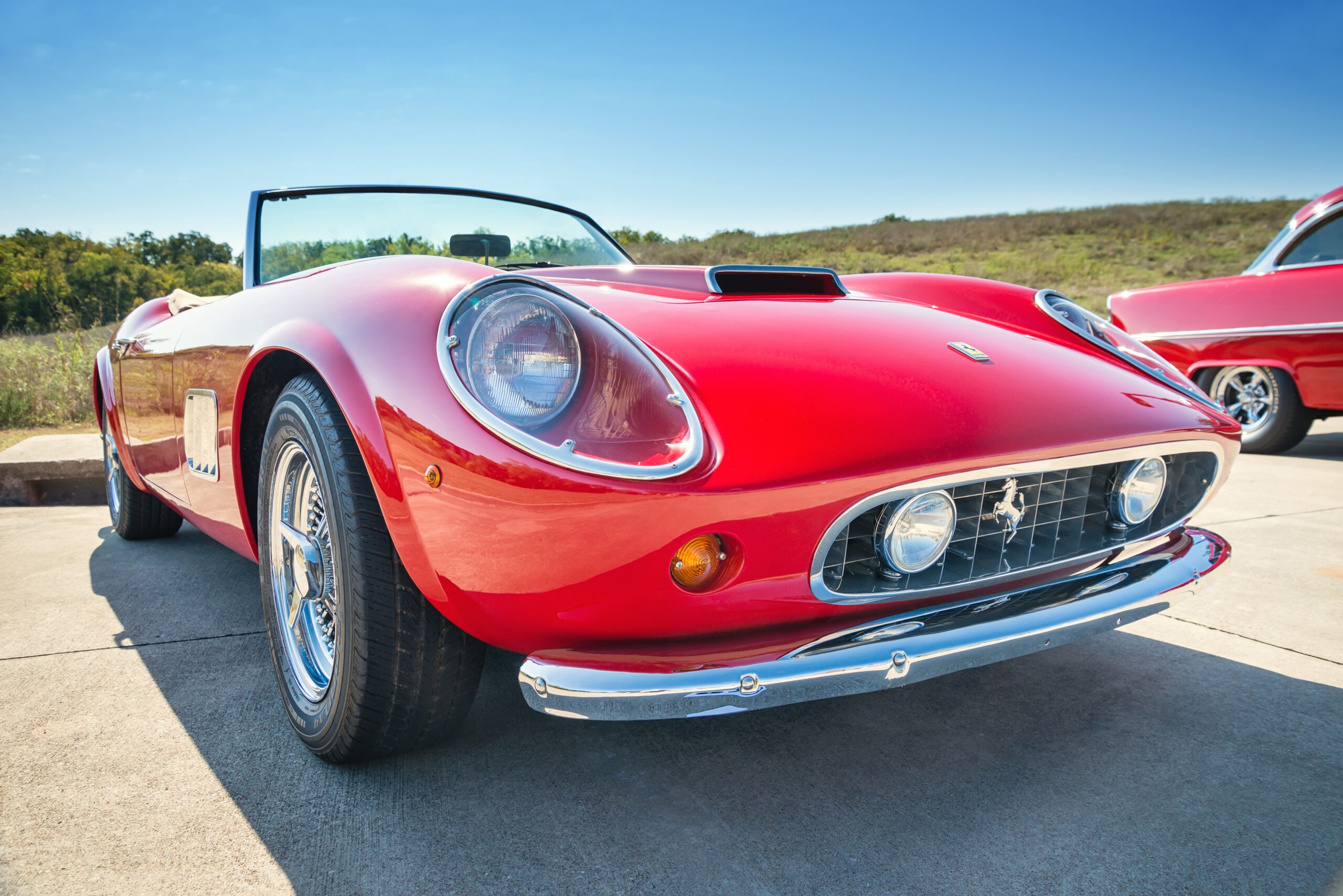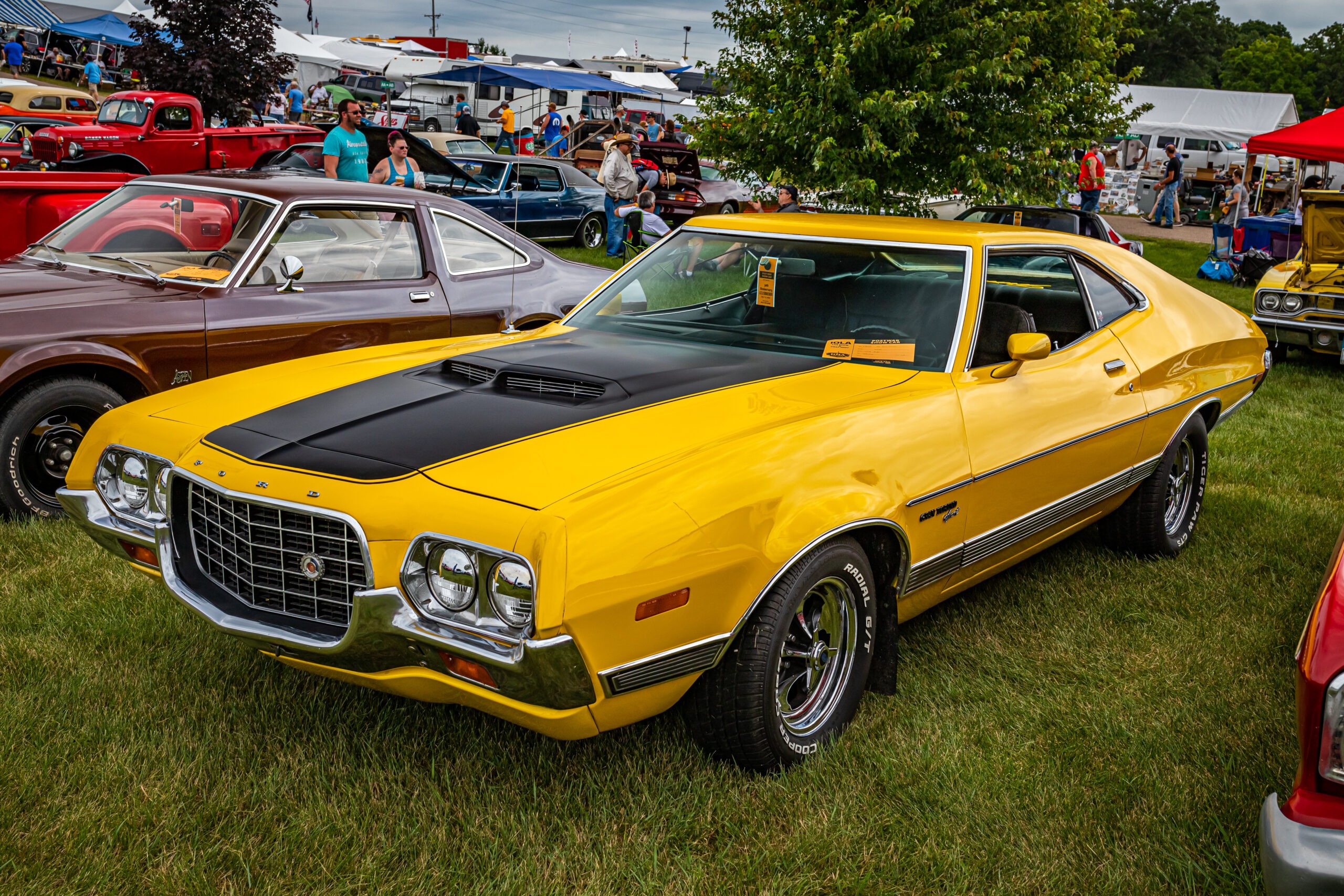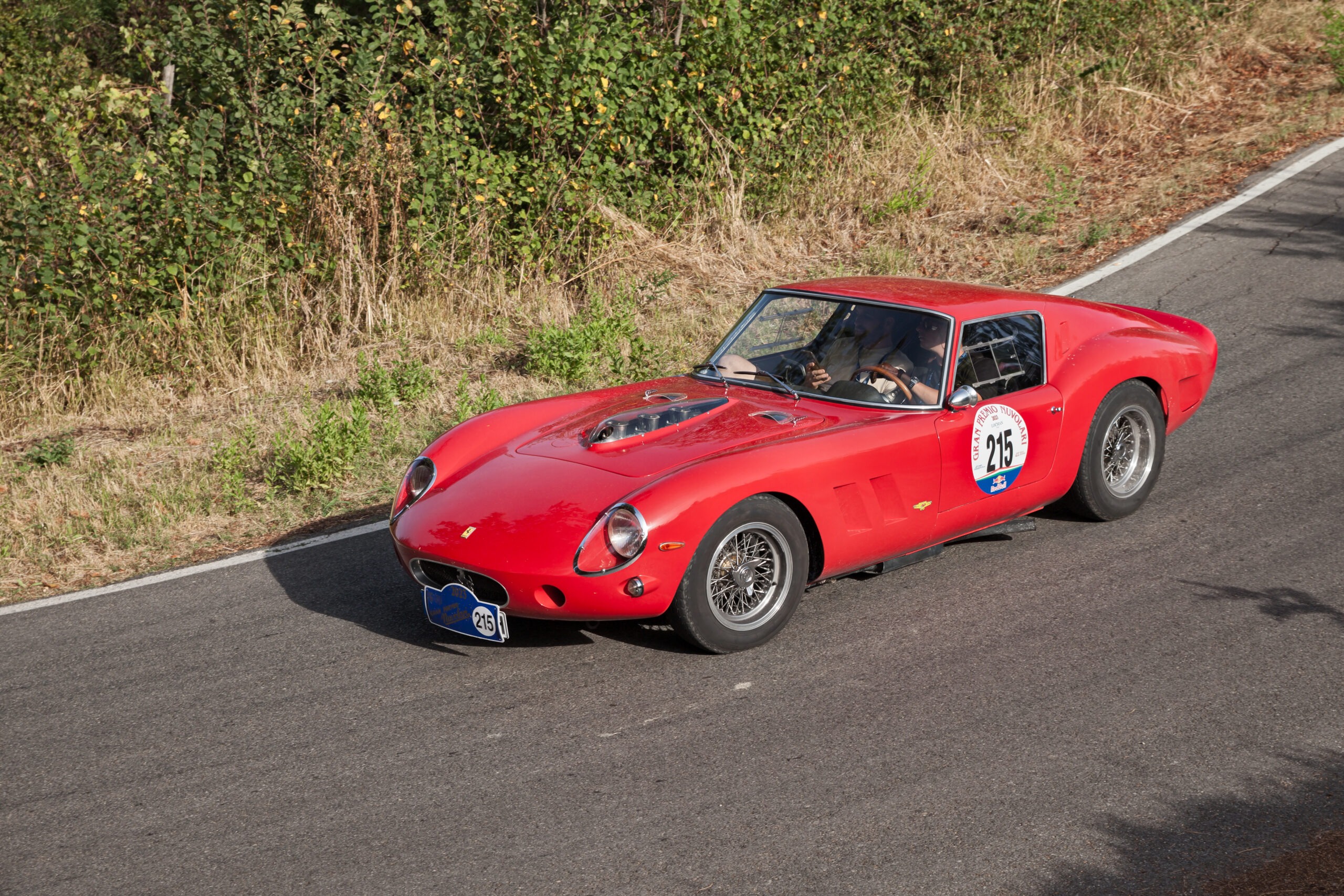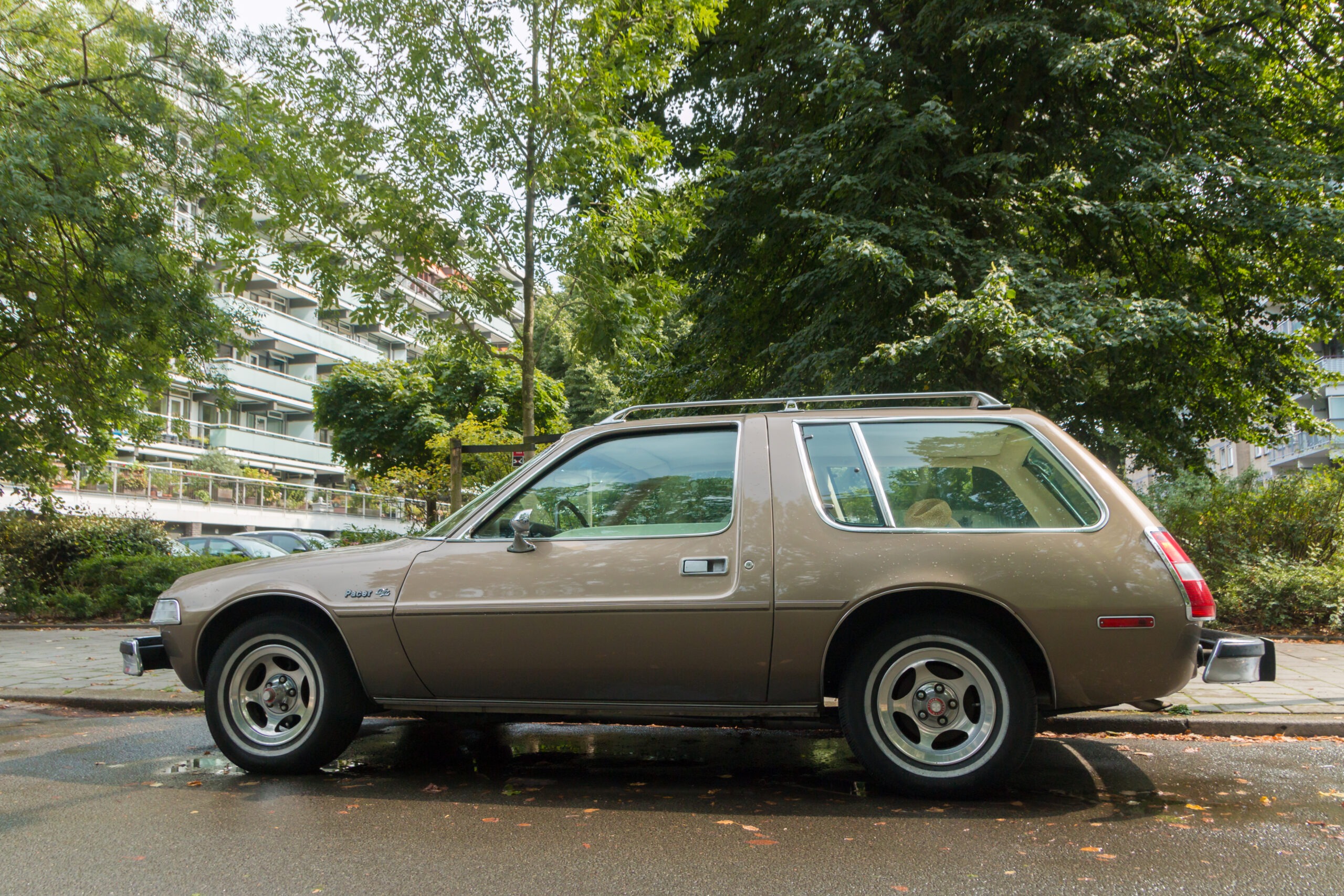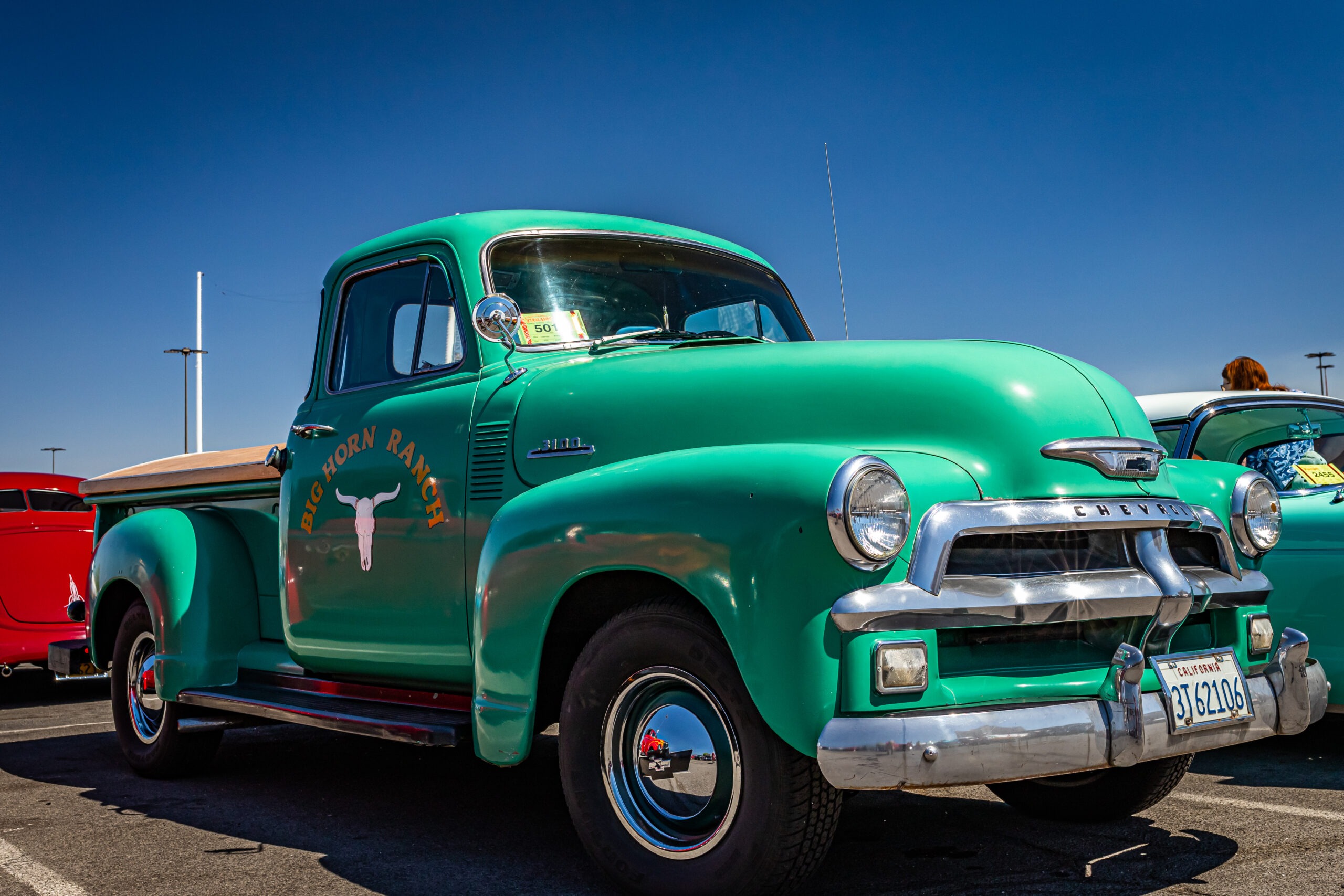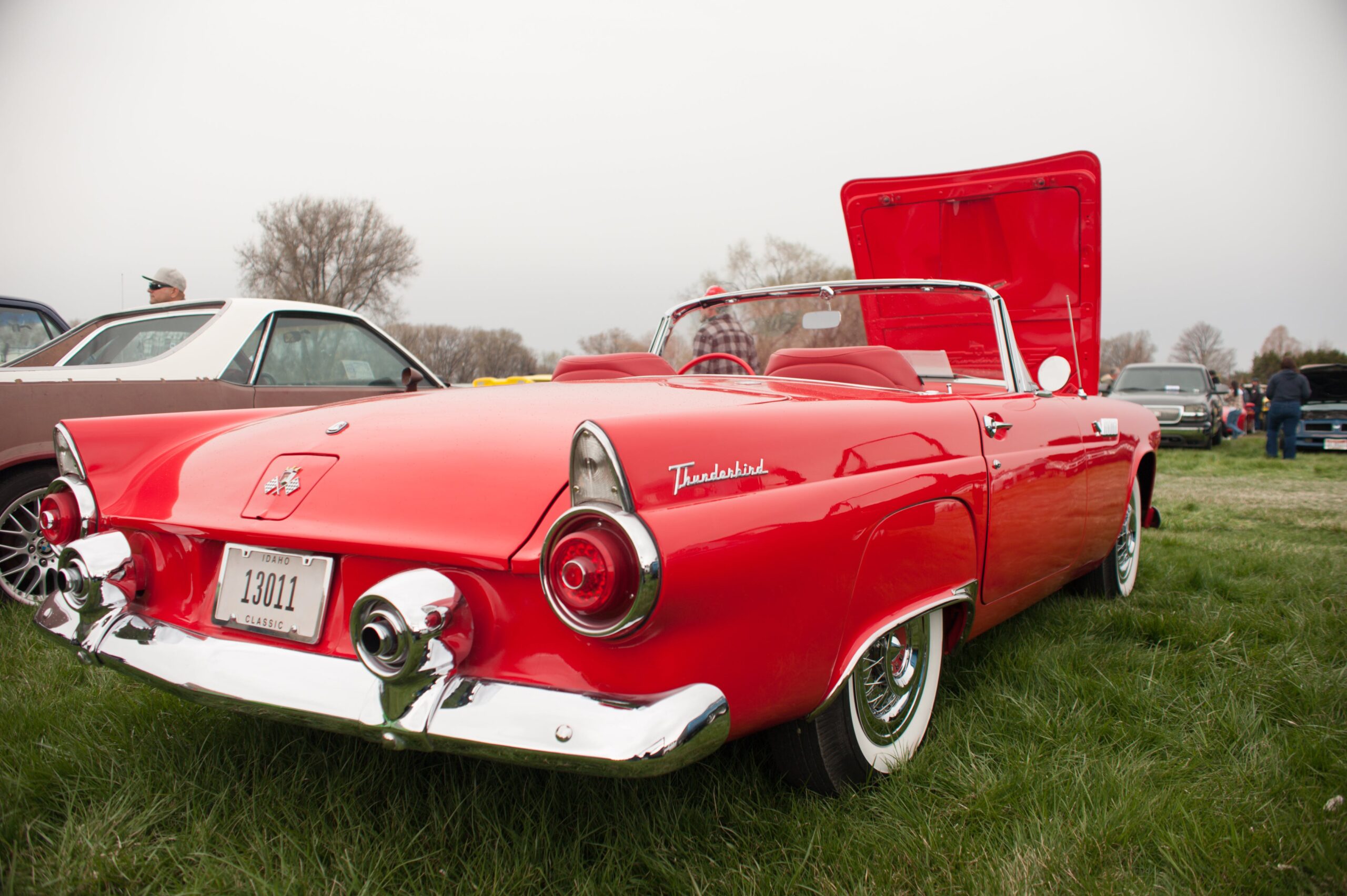In the world of cinema, cars are not just modes of transport; they are characters in their own right, often becoming as iconic as the actors who drive them. From the sleek Batmobile to the time-traveling DeLorean, these vehicles have left an indelible mark on pop culture. Let’s take a drive down memory lane and explore the top 20 iconic movie cars.
1. The DeLorean (Back to the Future)
The DeLorean DMC-12, famous for its gull-wing doors and stainless steel body, became legendary as a time machine in the “Back to the Future” series. Its role made it a symbol of 80s pop culture.
The DeLorean DMC-12, often simply referred to as “The DeLorean,” is a sports car that became a cultural icon due to its unique features and its prominent role in the “Back to the Future” film series. Here’s an overview of this iconic vehicle:
- Manufacturer: The DeLorean Motor Company (DMC), founded by John DeLorean.
- Production Period: 1981–1983.
- Design: The car was designed by Giorgetto Giugiaro of ItalDesign and featured gull-wing doors and an unpainted, stainless-steel exterior
- Gull-Wing Doors: One of the most distinctive features of the DeLorean is its gull-wing doors that open upwards.
- Stainless Steel Body: The car’s body panels were made of brushed SS304 stainless steel. This was unusual for cars at the time and remains a unique feature.
- Fiberglass Underbody: The stainless steel panels were attached to a fiberglass underbody.
- Limited Production Run: Only about 9,000 DeLoreans were produced before DMC faced financial difficulties and bankruptcy.
2. Batmobile (Batman Series)
The Batmobile, in its various incarnations, has always been more than just a car. It’s a superhero gadget on wheels, equipped with advanced technology, from Tim Burton’s gothic design to Christopher Nolan’s “Tumbler”.
3. Aston Martin DB5 (James Bond Series)
Sean Connery’s James Bond made the Aston Martin DB5 famous in “Goldfinger.” With its classic design and hidden gadgets, it’s the quintessential spy car. The Aston Martin DB5 is one of the most iconic luxury sports cars in the world, renowned for its elegance, performance. Here’s a detailed look at the Aston Martin DB5:
- Manufacturer: Aston Martin Lagonda Limited, a British manufacturer of luxury sports cars.
- Production Period: Originally produced between 1963 and 1965.
- Introduction: The DB5 was introduced in 1963 as a refinement of the previous DB4 model.
- Body Style: The DB5 was primarily a two-door coupe, although a convertible version was also produced.
- Design: It featured a timeless and elegant design, with a body built by the Italian coachbuilder Carrozzeria Touring Superleggera. The design utilized aluminum panels over a tubular frame.
- Interiors: The interiors were luxurious, fitted with fine leather and high-quality carpeting, showcasing Aston Martin’s craftsmanship.
- DB5 Vantage: A high-performance version, known as the DB5 Vantage, was also produced in limited numbers, featuring a more powerful engine.
- Continuation Series: In recent years, Aston Martin has produced a limited number of “Continuation” DB5s, replicating the original’s design and including some of the famous Bond gadgets, as a tribute to the model’s enduring legacy.
- Collector’s Item: The DB5 is highly sought after by car collectors and enthusiasts, not only for its beauty and performance but also for its cultural significance.
- A Symbol of Luxury and Style: The car remains a symbol of British luxury and style, epitomizing the blend of elegance and performance that Aston Martin is known for.
4. 1959 Cadillac Miller-Meteor (Ecto-1 – Ghostbusters)
The Ecto-1, a modified 1959 Cadillac Miller-Meteor ambulance, is instantly recognizable with its ghost-busting equipment and unique siren, becoming synonymous with the Ghostbusters franchise.
The 1959 Cadillac Miller-Meteor ambulance is a unique and iconic vehicle. Here’s more information about this classic car:
- Manufacturers: The vehicle was built by the Miller-Meteor company, a result of the 1957 merger between the A.J. Miller Company and the Meteor Motor Car Company. Both companies were well-known for their professional cars, including ambulances and hearses.
- Base Vehicle: The Miller-Meteor ambulances and hearses were built on Cadillac commercial chassis. For 1959, this meant using the Cadillac Series 62 base.
- Distinctive Styling: The 1959 models are famous for their distinctive styling. This includes large tail fins, which were a prominent design feature of many late 1950s American cars, especially Cadillacs.
- Size and Space: The vehicles were quite large, offering ample space inside for medical equipment and attendants, making them ideal for ambulance conversion.
- Interior: The interior was typically outfitted with various medical equipment, seating for attendants, and storage for stretchers and other emergency gear.
- Collector’s Item: Due to their association with “Ghostbusters” and their unique design, these vehicles have become sought-after collector’s items. Restored and replica Ecto-1s are particularly popular among movie car enthusiasts.
5. Volkswagen Beetle (Herbie – The Love Bug)
Herbie, the Volkswagen Beetle with a mind of its own, charmed audiences with its personality and racing abilities in Disney’s “The Love Bug.”
6. ’67 Ford Mustang Shelby GT500 (Gone in 60 Seconds)
Nicknamed “Eleanor,” this Mustang became an icon in the car theft action film, “Gone in 60 Seconds,” renowned for its sleek design and high-speed pursuits.
7. Ferrari 250 GT California Spyder (Ferris Bueller’s Day Off)
Ferrari’s 250 GT California Spyder, a symbol of luxury and freedom, played a memorable role in the teen comedy “Ferris Bueller’s Day Off.”
8. Mini Coopers (The Italian Job)
The original “The Italian Job” made the Mini Cooper famous, showcasing the compact car’s agility in a thrilling heist sequence through the streets of Turin.
9. Ford Gran Torino (Starsky and Hutch)
The bright red Ford Gran Torino, with its distinctive white vector stripe, became famous in the “Starsky and Hutch” TV series and movie adaptation.
10. 1961 Ferrari 250 GT California (Ferris Bueller’s Day Off)
A different Ferrari from the same film, this stunning model represents the ultimate day off for Ferris and his friends, leading to one of the movie’s most memorable scenes.
11. Pontiac Trans Am (Smokey and the Bandit)
The black and gold Pontiac Trans Am from “Smokey and the Bandit” epitomized cool in the late 70s, complete with a T-top and eagle emblem.
12. ’68 Ford Mustang GT 390 (Bullitt)
Steve McQueen’s Bullitt Mustang is renowned for its high-speed chase through San Francisco, setting a new standard for car chase scenes.
13. Dodge Charger (The Fast and the Furious)
The black 1970 Dodge Charger driven by Dominic Toretto became a symbol of raw power and family ties in “The Fast and the Furious” franchise.
14. ’76 AMC Pacer (Wayne’s World)
The baby blue ’76 AMC Pacer, known as “The Mirthmobile,” featured in “Wayne’s World,” is remembered for its bohemian rhapsody headbanging scene. The 1976 AMC Pacer is a compact car produced by the American Motors Corporation (AMC), notable for its unique design and distinctive features. Here’s an overview of the AMC Pacer:
- Manufacturer: American Motors Corporation.
- Production Period: The Pacer was produced from 1975 to 1980, with the 1976 model being part of its early years.
- Design Philosophy: AMC designed the Pacer with the aim of creating a small car that was spacious and comfortable inside, which led to its unusual proportions and large glass area.
- Unique Styling: The Pacer’s design was unconventional, featuring a wide body to increase interior space, rounded shapes, and a large amount of glass area, which led to it being nicknamed “The Flying Fishbowl.”
- Asymmetrical Doors: One of the Pacer’s unique features was its asymmetrical doors; the passenger side door was longer than the driver’s side to facilitate easier rear-seat access.
- Interior Space: Despite being a compact car, the Pacer offered a surprising amount of interior space, with comfortable seating and good visibility due to its large windows.
- Reception: The Pacer initially received a positive reception for its innovative design and was quite popular in its first few years. However, its popularity waned as consumer preferences shifted and fuel economy became more important.
- Collector’s Interest: Today, the AMC Pacer is a collector’s item for enthusiasts of unique and quirky cars from the 1970s. Its distinct design and cultural significance have earned it a place in automotive history.
- Symbol of the 70s Era: The Pacer is often seen as a symbol of 1970s American automotive design, representing a period when automakers were willing to take risks and experiment with unconventional designs.
15. ’53 Chevrolet 3100 (The Bridges of Madison County)
This classic truck, used by Clint Eastwood’s character, is a subtle but charming presence in the romantic drama “The Bridges of Madison County.” The 1953 Chevrolet 3100 is a classic American pickup truck, part of Chevrolet’s Advanced Design series. It holds a special place in automotive history, particularly for truck enthusiasts. Here’s an overview:
- Production Period: The 1953 model was part of Chevrolet’s Advanced Design truck series, which ran from 1947 to 1955. This series marked Chevrolet’s first major redesign post-World War II.
- Popularity: These trucks were extremely popular during their production years and remain highly sought after by collectors today.
- Body Style: The 1953 Chevrolet 3100 had a half-ton rating and was a part of the larger Chevrolet truck lineup, which included several different weight classes.
- Design Elements: The 1953 model featured rounded lines, a larger cab with increased visibility, and a more comfortable interior than previous models. It embodied the classic 1950s American truck design.
- Colors and Finishes: These trucks were available in various colors, with many featuring a two-tone paint job that accentuated their design lines.
- Advancements: The Advanced Design series introduced several technological advancements, including a more robust chassis and upgraded suspension, which improved the truck’s handling and load capacity.
- Icon of American Culture: The Chevrolet 3100 series is often viewed as an icon of American automotive culture, symbolizing the post-war boom and the rise of the American middle class.
- Restoration and Collectibility: Many of these trucks have been restored and customized, reflecting their enduring popularity. They are a common sight at car shows and are prized by collectors for their historical significance and classic design.
16. Ford Explorer and Jeep Wrangler (Jurassic Park)
The Ford Explorer and Jeep Wrangler in “Jurassic Park” are remembered not just for their iconic logos, but for their scenes with the terrifying T-Rex.
17. 1966 Thunderbird (Thelma & Louise)
The turquoise 1966 Thunderbird driven by Thelma and Louise became a symbol of freedom and rebellion in the eponymous film. The 1966 Ford Thunderbird is a classic American luxury car that embodies the spirit of the 1960s automotive design. Known for its distinctive style and comfort, the Thunderbird, often referred to as “T-Bird,” has a significant place in automotive history. Here’s a detailed look at the 1966 model:
- Manufacturer: Ford Motor Company.
- Model History: The Thunderbird debuted in 1955 as a two-seat convertible, evolving into a larger luxury car in the following years. By 1966, it was in its fourth generation, which began in 1964.
- Body Styles: In 1966, the Thunderbird was available in three body styles: a two-door hardtop, a convertible, and a unique four-door “Landau” model with rear-hinged “suicide” doors.
- Exterior Design: The car featured a long hood, short rear deck, and a spacious, comfortable interior. The design was elegant yet sporty, with a focus on luxury.
- Interior Features: The Thunderbird’s interior was known for its plush and advanced features for the time, including power windows and seats, air conditioning, and a sophisticated control panel.
- Symbol of the Era: The Thunderbird was a symbol of American optimism and luxury during the mid-20th century. It was seen as a status symbol, offering a blend of comfort and performance.
- Pop Culture: The Thunderbird gained fame in pop culture, notably appearing in movies and television.
- Collector Interest: The 1966 Ford Thunderbird is highly valued by collectors today, particularly the convertible and Landau models, due to their unique design and luxury features.
- Enduring Appeal: The car’s blend of luxury, style, and performance has ensured its lasting appeal. Enthusiasts often restore and customize these vehicles, keeping the legacy of the Thunderbird alive.
18. Chevy Camaro ‘Bumblebee’ (Transformers)
Bumblebee, the Chevy Camaro in “Transformers,” stands out for its bright yellow design and its role as a sentient robot.
19. 1973 Ford Falcon XB GT Coupe (Mad Max)
The “Pursuit Special,” Mad Max’s modified Ford Falcon, is a post-apocalyptic beast, embodying the ruggedness of the film’s dystopian world. Here’s a detailed look at this classic car:
- Manufacturer: The Ford Falcon XB GT Coupe was manufactured by Ford Australia, part of Ford’s broader Falcon range.
- Production Period: It was produced from 1973 to 1976, during a time when Australian car manufacturers were heavily focused on muscle cars.
- Styling: The XB GT showcased typical muscle car styling of the era, characterized by a long hood, a short rear deck, and a sporty, aggressive look.
- Body Type: It was a two-door coupe, a popular body style for performance cars of that period.
- Interior: Inside, the Falcon XB GT offered a relatively spartan but functional interior, typical of muscle cars, focusing more on performance than luxury.
- Icon of Australian Automotive History: In Australia, the Falcon XB GT holds a special place in the country’s automotive history, representing the peak of the Australian muscle car era.
- End of an Era: The XB GT was one of the last traditional Australian muscle cars, as the oil crisis and changing consumer preferences led to a decline in demand for such vehicles.
- Collector’s Item: Today, the Falcon XB GT, especially well-maintained or restored models, is highly sought after by collectors. Its fame from the “Mad Max” films adds to its collectibility and iconic status.
20. Audi R8 (Iron Man)
The Audi R8 became synonymous with Tony Stark’s high-tech persona in the “Iron Man” and “Avengers” films, blending supercar performance with superhero glamour.
Conclusion
These iconic movie cars are more than just props; they are integral to the storytelling and character development in these films. They evoke nostalgia, symbolize adventure, and continue to inspire car enthusiasts and movie fans alike. Whether through high-speed chases, time-travel adventures, or simply cruising down the highway, these vehicles have secured their place in the annals of pop culture.

